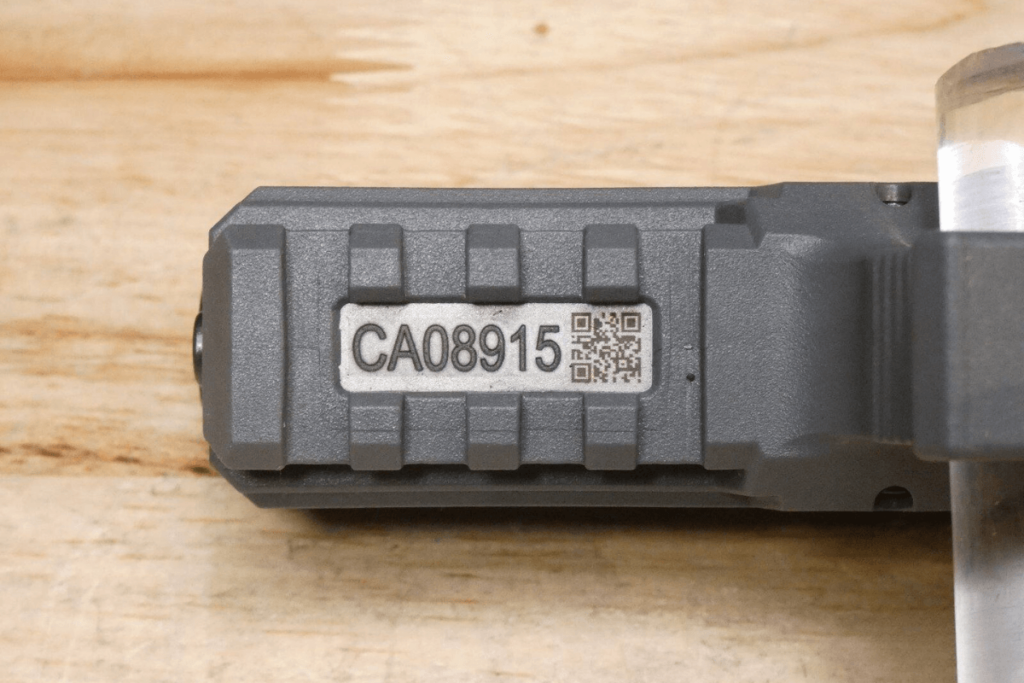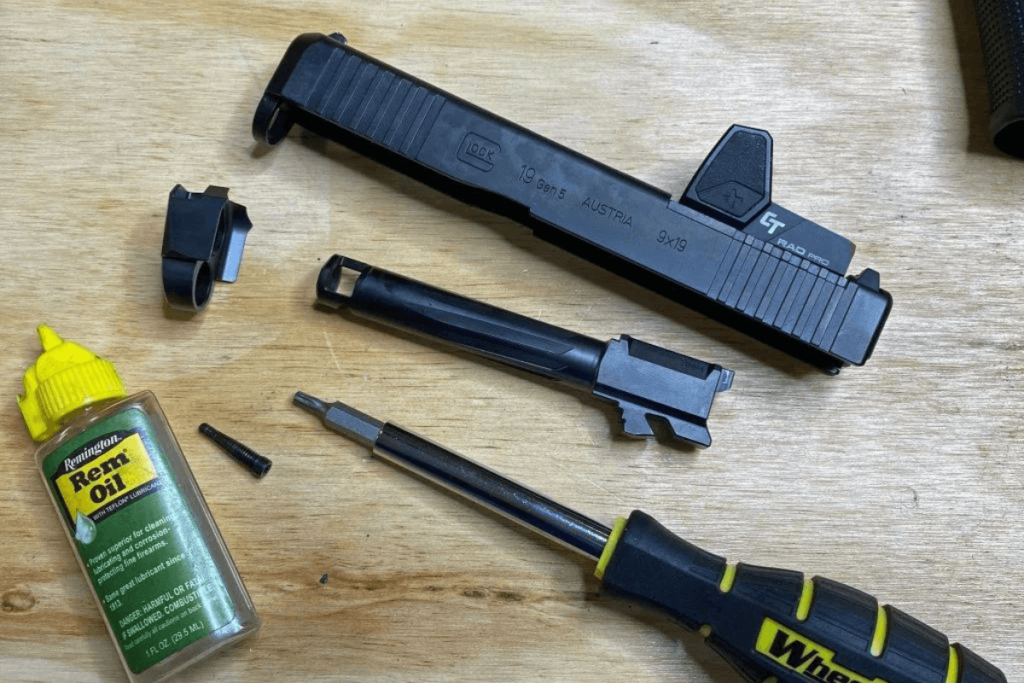Are you looking to serialize your homemade ‘ghost gun’ but aren’t sure how to do it?
If so, you’re reading the right article.
Ghost guns simply refer to un-serialized firearms that can be made by people at home with the aid of completion kits and unfinished frames that need to be milled out and have the necessary components installed.
The ATF (Bureau of Alcohol, Tobacco, Firearms, and Explosives) defines these types of guns as PMFs, or Privately Made Firearms.
Under current ATF rules, not all PMFs are required to be serialized.
Specifically, anyone who makes their own firearms at home does not need to add a serial number to their ghost guns (or PMFs) so long as they are not engaged in the business of building firearms for a profit.
This means you must serialize your ghost gun if you plan on selling it to another person.
Furthermore, FFL (Federal Firearms License) holders must mark their ghost guns with a serial number that they intend to sell. This is why you can’t buy ghost guns at gun dealers, each of which are required to
However, several states have put laws into place that require ghost guns to be serialized irrespective of Federal law.
If you live in such a state, you’ll be required to add a serial number to any homemade firearms that you build or assemble at home.
How To Serialize Your Ghost Gun
To meet ATF requirements, the serialization font must have a print size of at least 1/16 inch, have a depth of at least 0.003 inches, and be marked on either the frame or the receiver.
To begin the serialization process yourself, you’ll need to follow these steps:
Step #1: Choose Your Serial Number

You can pick any serial number or letters you would like to use so long as you do not use it with more than one ghost gun you manufacture.
Step #2: Choose the Marking Method

There are several methods you can use to actually serialize the firearm, but the three most common methods are engraving, stamping, and laser etching.
Engraving
- Engraving involves cutting or carving a serial number into the surface of the firearm using a specialized engraving tool or machine. This method provides a permanent and highly visible marking that is resistant to wear and tampering.
- Engraving can also be done by hand with handheld engraving tools or by using computer-controlled engraving machines for precise and consistent results.
Stamping
- Stamping involves impressing a serial number onto the surface of the firearm using a metal stamp or die. This method is typically used for marking serial numbers on metal surfaces, such as steel or aluminum.
- Take note that stamping requires significant force to create a deep and permanent marking, making it suitable for durable and tamper-resistant serialization.
Laser Etching
- Laser etching, also known as laser marking or laser engraving, utilizes a high-powered laser beam to etch a serial number onto the surface of the firearm. This method provides precise and high-resolution marking without physical contact with the surface, minimizing the risk of damage to the firearm.
- Laser etching can be done on a wide variety of different materials, including metals, plastics, and ceramics. It has become a very common method for firearms serialization due to its accuracy, speed, and ability to produce detailed markings.
Step #3: Disassemble and Clean the Firearm

Always field strip and clean your firearm before you modify the components with any markings or serializations.
This will ensure that no contaminants get in the way of the process and also ensure that the other components of the gun won’t be touched during the marking process.
At that point, you’re ready to start marking the frame or receiver with the serial number.
Keep in mind that if you don’t feel confident in your abilities to engrave, stamp, or laser etch your firearm, you can always hire a professional engraver or gunsmith to serialize the gun for you.
States That Require Ghost Gun Serialization

In addition to Washington D.C, the following states require that all ghost guns be serialized:
- California
- Colorado
- Connecticut
- Delaware
- Hawaii
- Illinois
- Maryland
- Nevada
- New Jersey
- New York
- Oregon
- Rhode Island
- Washington
There are also several cities that require ghost guns to be serialized as well.
Remember that it’s your responsibility to research whether your privately made firearms are required to be serialized in your jurisdiction.
Conclusion
Remember to maintain detailed records of the serialized firearm, including the serial number itself and the date of serialization This information may be necessary for legal compliance and ownership verification in your state.
If you have any more questions about serializing ghost guns, let us know below!


